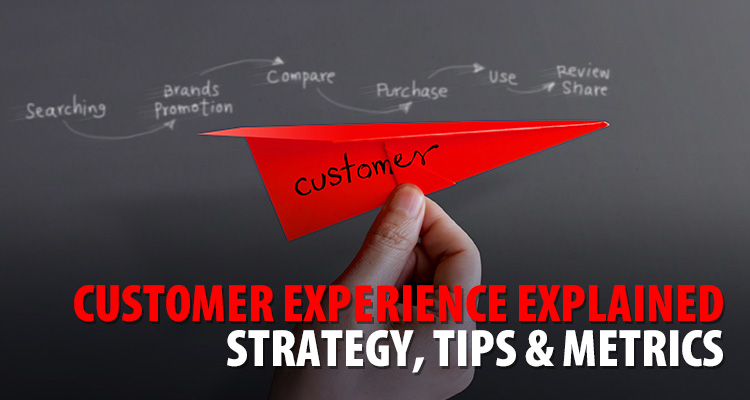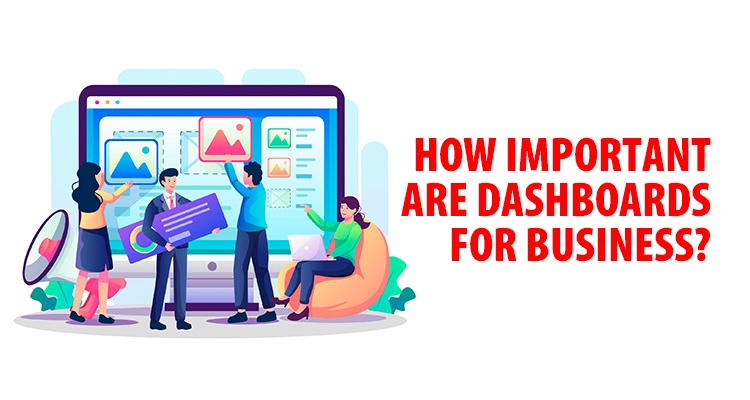Customer Experience Explained: Strategy, Tips & Metrics

Austin Caldwell | Senior Product Marketing Manager | NetSuite
Adopting a consumer-centric approach is paramount to the success of your business. It leads to happier customers, who, in turn, become more loyal to your brand, delivering increased revenue. Plus, customers who are happy with your business may promote it through word of mouth, including positive online reviews, one of the most powerful forms of marketing.
All of which demonstrates why carefully crafting an excellent customer experience and constantly improving it should be a priority in any organization.
What Is Customer Experience (CX)?
Also referred to as CX, customer experience is your customers’ perception or opinion about their interactions with your business. Their view of your brand can be shaped throughout the buyer’s journey, from their first interaction to post-sale support, and has a lasting impact on your company, including your bottom line.
The Customer Experience Explained
Any and all interactions a customer has with your business impacts the customer experience, whether it’s browsing through your website for the first time or contacting a customer service representative after purchasing your product or service. Whether a customer decides to continue to progress through the buyer’s journey and, ideally, become a repeat customer depends on how these interactions go.
The Importance of the Customer Experience
Providing a positive and memorable customer experience is important to sustaining the success and growth of your business. The more positive a customer’s experience, the more likely they are to make a purchase, become loyal to your brand and potentially turn into a brand advocate.
Customers usually have multiple options when selecting a product or service, and there are countless resources to help inform their decision. In fact, a potential customer may not need to interact with any of your employees directly before making their choice. That’s why it is essential to ensure all aspects of your CX, from beginning to end, leave a positive impression and help to convert prospects into customers.
What Is a Good Customer Experience?
A good customer experience should be painless and convenient before, during and after the purchase experience. The actions your business takes to keep customers satisfied, drive repeat sales and encourage them to share their experience with your brand with others can all impact that experience. Specific actions and systems vary according to business or industry, but there are a few best practices organizations can follow to build a better customer experience.
To create a good customer experience, companies need to frequently collect feedback from customers at each stage in the buyer’s journey, focus on listening and responding to the feedback they receive and use that information to build a more thorough understanding of their customers. Ultimately, a great customer experience is only possible when a business gives employees the authority and resources to deliver the best experience possible.
Customer Experience vs. Customer Service
Customer service and the customer experience are sometimes confused. Customer experience is a consumer’s overall impression of your business, whereas customer service is only one component of how someone interacts with your brand. Customer service on the other hand, is a specific touchpoint within the customer experience—it begins when a customer contacts your business and requests assistance. They may call a hotline to ask questions about an application form or send a message on social media asking for a refund.
What Are the Ways a Customer Can Interact With a Business?
Customer experiences come from many different interactions. Each type of touchpoint can impact the experience, and those interactions vary depending on your industry and business model. Here are several examples and some suggestions on how to improve that experience:
- Brick-and-mortar store visits: To ensure a positive in-store customer experience, consider simple things like greeting customers at the door, helping them find items they’re looking for and providing fast checkout times.
- Mobile apps: Customers tend to look for fast loading times, whether your app is secure and if there’s a way to contact someone with a question or issue. The app should also be easy to use.
- Social media: Interactions on social media could include acknowledging a shoutout of your brand from a customer and answering queries and feedback from clients and prospects promptly. While some businesses offer customer support through social channels, best practices encourage routing customers to other support channels like email, chat or telephone.
- Web/SMS chat support: Customers are looking for fast response times and comprehensive answers when they turn to online or SMS chat. Make sure you have the right people answering questions with the necessary knowledge and experience.
- Support forums: These are typically housed on your website, perhaps under a FAQ section, but they could also be groups of people on third-party blogs or forums who use your product or service.
- Marketing: Marketing touchpoints can include print media, email marketing, social media ads, digital display ads and other channels.
- Connected devices: As the Internet of Things (IoT) allows businesses to connect devices to one another, support or reordering points, evaluating how that can affect the customer experience is vital. Connections should be easy, while also providing control and protecting privacy for the customer.
What Does the Customer Experience Include?
Customer experience is a broad term and can cover a lot of things, so let’s break it down into some components that are relevant to businesses across all industries.
- Strategy and culture: Executive leadership typically lead efforts to improve the customer experience. These leaders need to ensure the business focuses on the customer throughout the entire customer life cycle by providing advice and resources. This includes ensuring that the organization’s culture is one where everyone works together to develop strategies and processes that will enhance the customer experience.
- Products and/or services: All products and services you offer need to meet customers’ demands and ideally exceed their expectations. When possible, these offerings should anticipate the common needs of consumers before they reach out for assistance.
- Human interaction: This can involve vendors, partners and customer service representatives, who each need to deliver a consistent experience for individual customers. That means they need to understand your business’s strategy and know about available resources that will help them provide the desired experience.
- Touchpoints: Every conceivable way a customer can interact with your company is considered a touchpoint. This includes your website, stores (including third-party sellers), online chat, text messages, emails, social media and phone calls.
- Technology: No business should overlook technology’s role in delivering excellent customer experience. Consider customer relationship management (CRM) software or other communication tools like marketing automation or customer feedback.
6 Customer Experience Metrics
Although customer experience seems difficult to measure, there are a few metrics you can use to understand how your business is doing. Using these metrics will help you track how your CX has improved or worsened over time and help you adjust as needed.
- Net Promoter Score®: This score allows you to measure customer loyalty by having customers answer a simple question. The question usually asks a customer to rate how likely they are to recommend your product or service to a friend or colleague on a scale of 1 to 10.
- Marketing campaign engagement: Simple metrics like open rate and click-through rate on marketing emails are important and give you insights into which parts of the customer experience may require a closer look. Broader numbers like conversion rate and average sales cycle length are also valuable.
- Customer surveys: Surveys can measure how easy it is for a customer to complete certain actions, such as contacting customer service or completing returns. These insights can be found by sending simple, brief surveys with yes/no questions or rating scales.
- Customer churn/attrition rate: Tracking customer retention can shed light on whether customers are having positive brand experiences. The churn rate calculates what percentage of customers stopped using your product or service during a certain period, and the higher that number, the more likely something is awry with your customer experience.
- Customer support ticket trends: Metrics like time to resolution (TTR) measure the average amount of time it takes your customer service representatives to resolve an issue after a customer reaches out. You can measure it in business hours or days, and you’ll want to make sure this number isn’t getting higher. Leaders should also pay attention to the source of the tickets—are most customers reaching out about the same problem or two?
- Customer satisfaction scores: Also referred to as CSAT, this calculates customer satisfaction with your company’s product or service. It’s typically measured through survey responses on a five- or seven-point scale, focusing on specific aspects of their experience or their overall thoughts on your business.
6 Ways to Improve Your Customer Experience
Improving your customer service starts with creating a customer journey map and having a clear understanding of buyer personas. It also includes working hard to establish a connection with customers, so they enjoy a positive experience, build a community, participate in an effective feedback loop and create helpful and educational content.
Here are some of these tactics explained in more detail.
- Feedback loops: Receiving feedback straight from customers is the best way to understand how others interact with your brand. It will also give you a chance to see what’s working and where customers are dropping off. You want to create as many opportunities as possible for customers to offer feedback. Don’t forget to acknowledge that feedback and do your best to actually encourage changes based on what was said.
- Consistent brand engagements: Ensuring that all communication is consistent from one channel to another is important in facilitating a positive experience. For example, if a customer starts by getting their request resolved via chat and later calls, the customer service rep should know what the customer has already asked and what the business has done, even though it was through a different channel.
- Personalization: The more you can personalize the customer experience to individual preferences, the more likely someone is to engage and stick around. This can include product recommendations, remembering their preferred contact method or only sending them marketing emails for items they’re interested in.
- Enable self-service: Customers who like to do their own research or solve issues on their own are an increasingly large group—85% complete research online before buying something online. That audience will appreciate your business having a robust Help (or FAQs) section, informative articles and/or a chatbot to point them in the right direction on your site.
- Analyzing data: Hold on to those surveys or other types of data you collect over time. These are a treasure trove of information to help you understand your customers better, and keeping historical data allows you to make valuable month-over-month and year-over-year comparisons.
- Be proactive: Anticipating customer needs is far better than being fast to respond to them later. Doing so can help your business distinguish itself in the marketplace and prevent issues from escalating, which in turn reduces the number of buyers who share their negative experience with others.
What Is Customer Experience Management?
Customer experience management (CEM) is designing systems or processes to support customer interactions that meet or exceed expectations. You’re looking at factors that drive the customer experience, then identifying and implementing approaches to improve upon each touchpoint. A holistic approach works best since it considers how each factor can influence other aspects of the customer journey.
Industry leaders spend a lot of time on customer experience management because they recognize its importance to the overall success of their business. A better customer experience can lead to not only more clients, but happier ones.
CEM vs. CRM
CRM, or customer relationship management, looks at what a business knows about a customer after some record of interaction, whereas CEM looks at all points of customer interaction. Each differs in terms of their subject matter, purpose, audience, timing and more.
| CEM | CRM | |
|---|---|---|
| Purpose | Keeps a record of what a customer believes to be true about a business | Keeps a record of what a business understands about a customer |
| Timing | At all touchpoints | After an interaction with customer |
| How it’s monitored | Customer research, targeted studies, surveys | Market research, automated tracking systems, website click-through, sales and customer service data |
| How information is used | By leaders who create processes and systems to improve CX | Primarily by sales, service and marketing staff |
| Relevance | Reveals insights into how you improve touchpoints in terms of expectations and experience | Boosts upselling, cross-selling, marketing and customer service opportunities |
Customer Journey Mapping
Mapping the customer journey can be an extremely valuable activity for organizations because it allows them to step into the shoes of a prospective or current customer. For each stage of the buying cycle, it looks at their objectives and emotions, what action the person would complete and the tools or resources available to them (touchpoints are part of this). Businesses may do this for each buyer persona in their target audience, as their challenges and what they’re looking for at each stage may be different.
By breaking down each step in such detail, it’s often easier to spot potential problems that create friction and keep prospects from converting. And since you know the specific source of the problem, you can develop a targeted solution that will eliminate any barriers.






